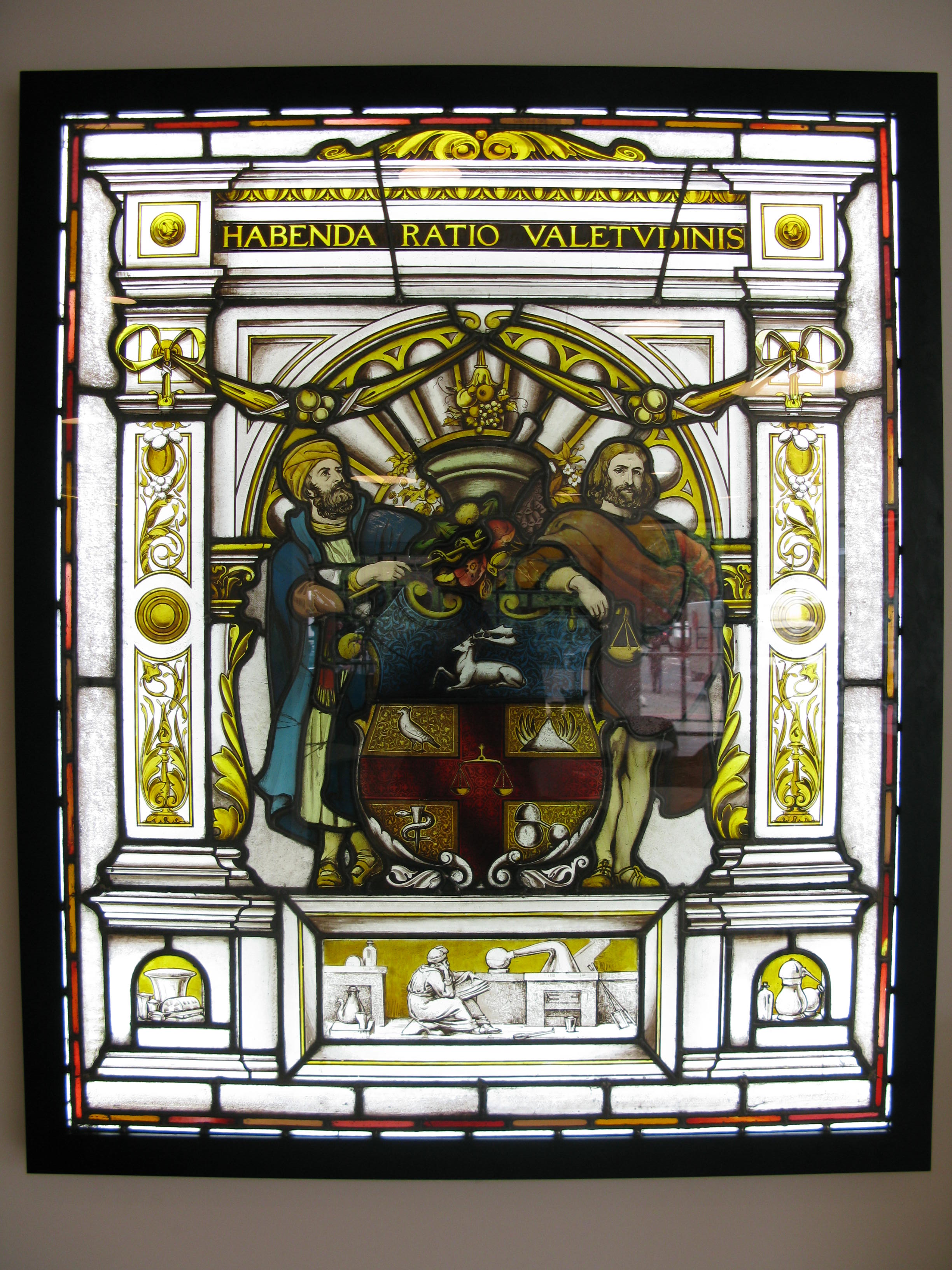
Stained Glass Window of the Pharmaceutical Society’s Coat of Arms
Circa 1900
This beautiful stained and painted glass window shows the Pharmaceutical Society’s coat of arms, crest and motto, granted in 1844. In general, the choice of devices and supporters reflects the 1840s chemists and druggists’ keen regard for the historical and international roots of their profession. The Society's Arms show:
- In the first quarter, a dove bearing an olive branch, the traditional Biblical emblem of peace.
- In the second, an aloe plant, representing the use of plants in medicine.
- In the third, the medical symbol of a snake-entwined staff.
- In the fourth, an alembic and receiver, an early apparatus for distillation.
- At the centre of the cross is a pair of scales, representing measures and standards.
- Above the cross is a stag, possibly signify the animal content of medicines in the 1800s.
- Over the arms is the crest, with a mortar and pestle, the traditional sign of the apothecary/pharmacist.
The supporters are Ibn Sina, (often known as Avicenna) on the left, and Galen on the right, two of the most important figures in the history of medicine. Ibn Sina holds the staff of the Greek god Asclepius, which represents the art of healing. Galen is shown with a gold handheld balance, a weighing device widely used in the Roman period, to represent the accurate dispensing of prescriptions.
The Society’s motto ‘HABENDA RATIO VALETUDINIS’ is taken from Cicero’s “De Senectute”, a dissertation on old age. The translation adopted by the Society was ‘WE MUST PAY ATTENTION TO OUR HEALTH’.
The crest and coat of arms are surrounded by classical architectural motifs. The lower panels depict the laboratory and tools of an early alchemist or apothecary. The window, dating from around 1900, was originally in the examination hall of the Society's first headquarters at 17 Bloomsbury Square, London.